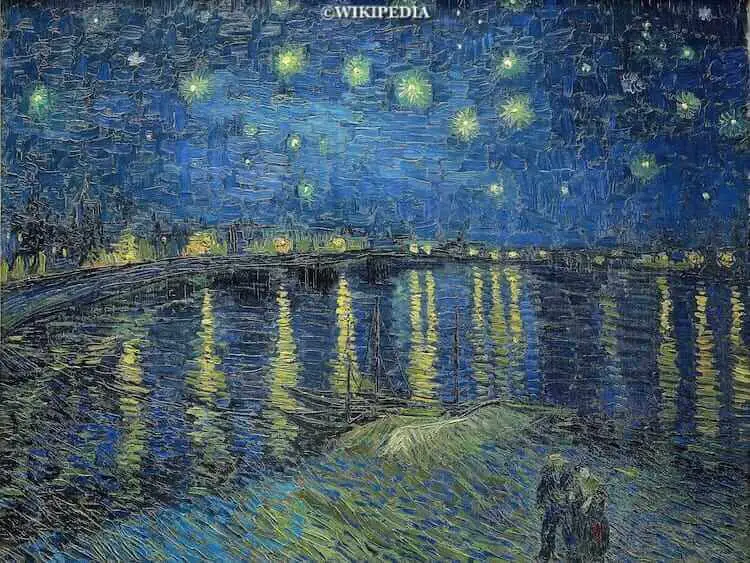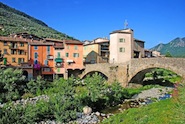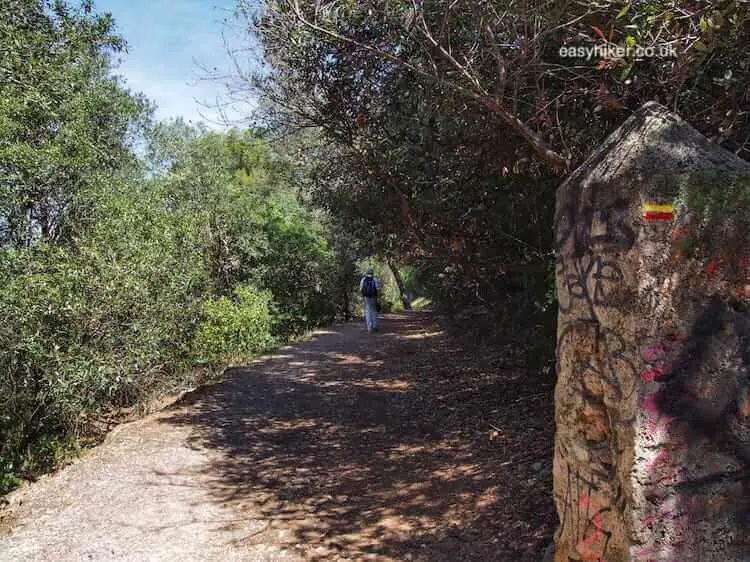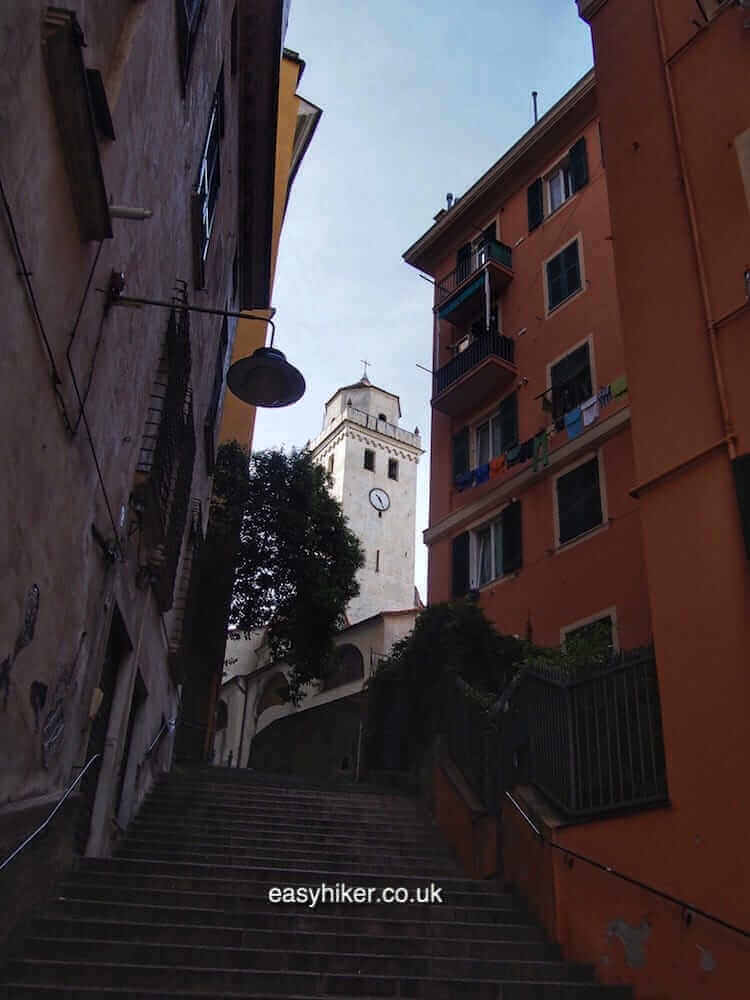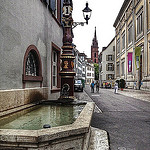Just as Italy is not just the sum of Rome, Florence and Venice, Campania – the region south of Rome and its province of Lazio – is more than Naples plus the Amalfi Coast.
Today and over the next few weeks, we will present this region to you in its full diversity, offering you something old (very old) and something new (well, a new take on familiar motive), something borrowed (a piece of France that has landed in Italy on a complex fly path) and something in a sea of blue: a small and perfectly shaped island, just off the coast of Naples, handy for the day tripper – or rather, to coin a new word: “footy”, which means that it is easy-to-grasp with your feet and easy-to-explore in less than a day.
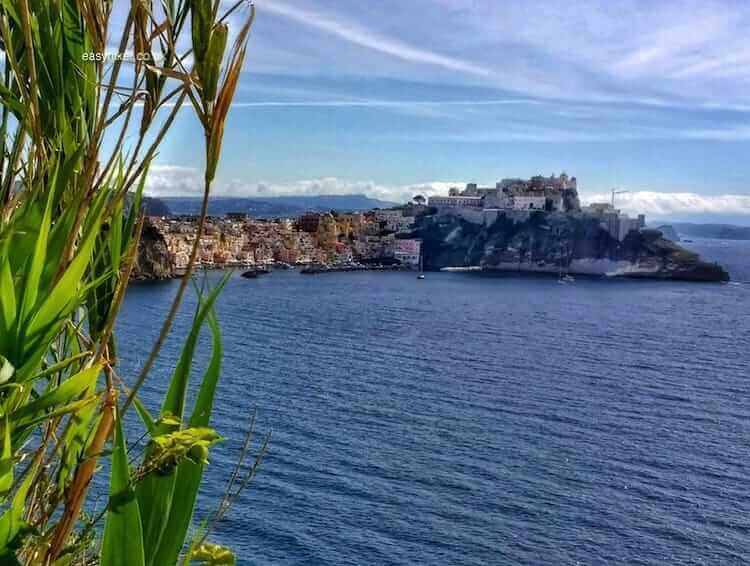
Let’s Discover Campania Beyond Naples
Procida is the smallest of the three islands in the so-called Campanian Archipelago and less fancy or famous than Capri and Ischia. Procida, in fact, is only about five kilometres long and 1 kilometre wide: the perfect size for a relaxing day trip that includes a scenic walk.
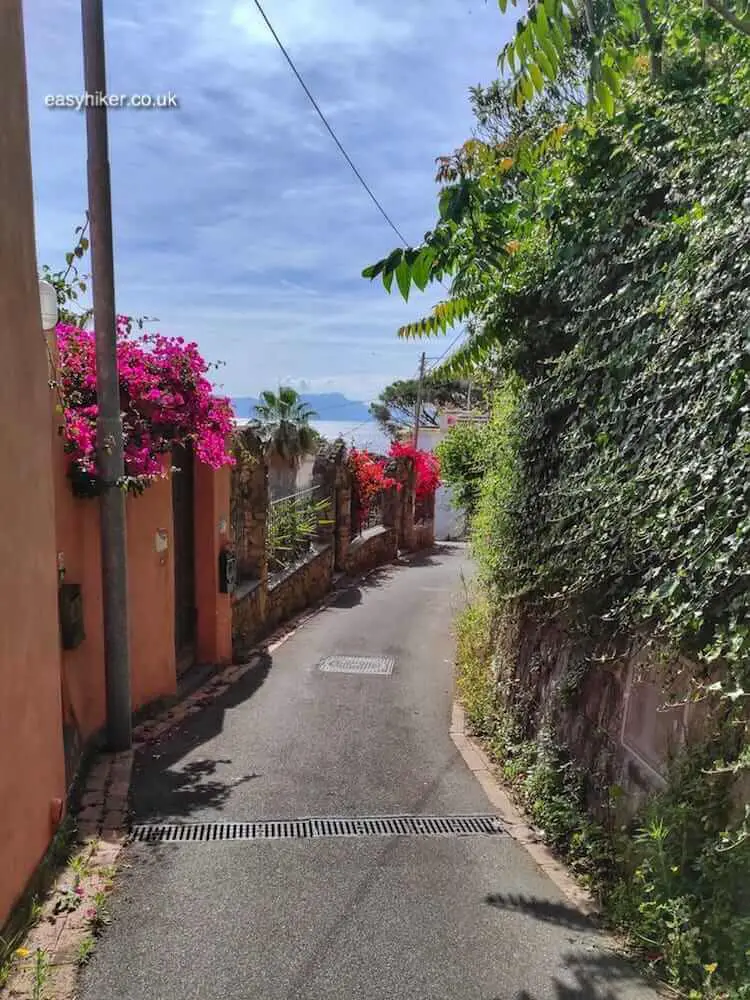
Of the three islands, it is also the nearest to Naples. This may be why the motives are so similar: the street markets, …
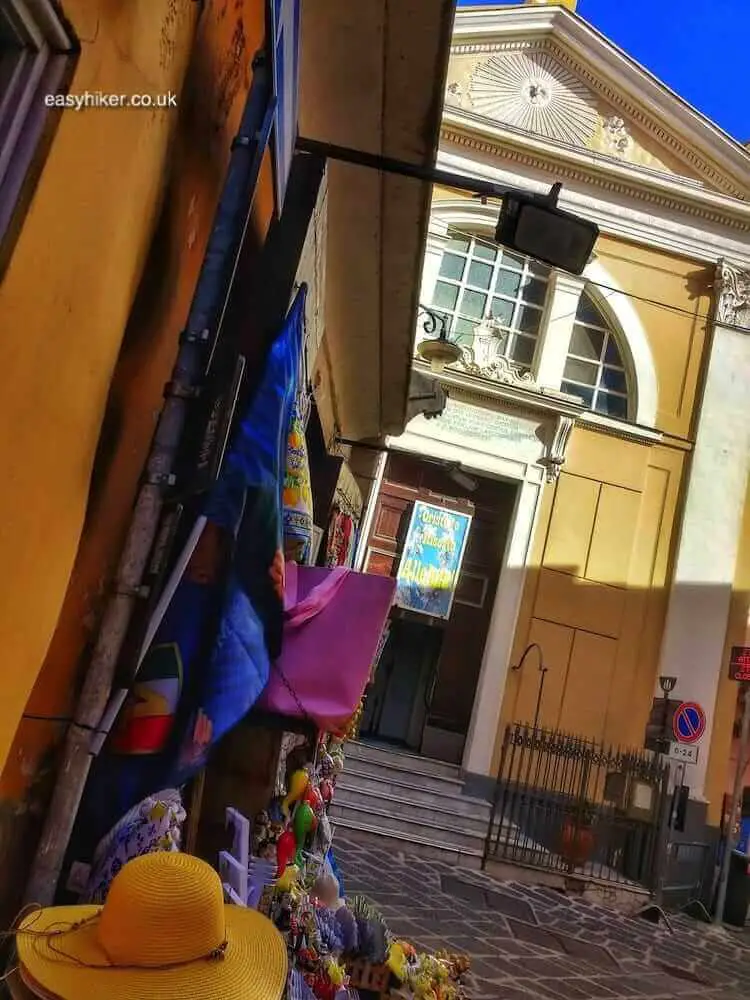
… the love for the local football team, …
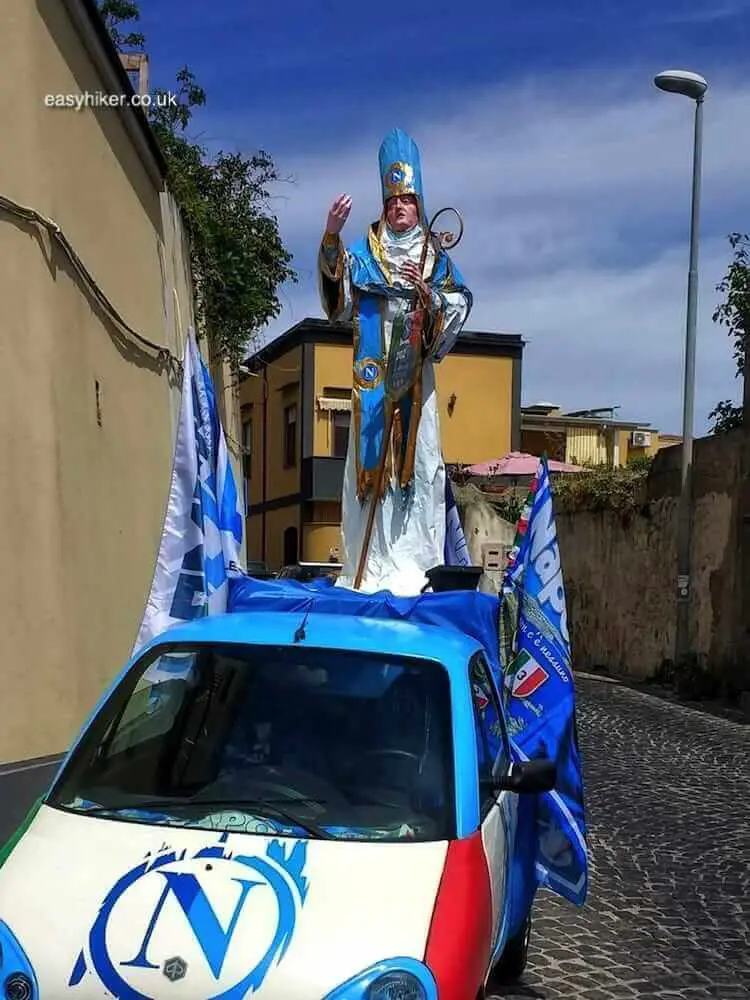
… and the hung-out-to-dry laundry that decorates the townscape.

It is surprising, however, given the familiarity of the elements, how different the mix feels.
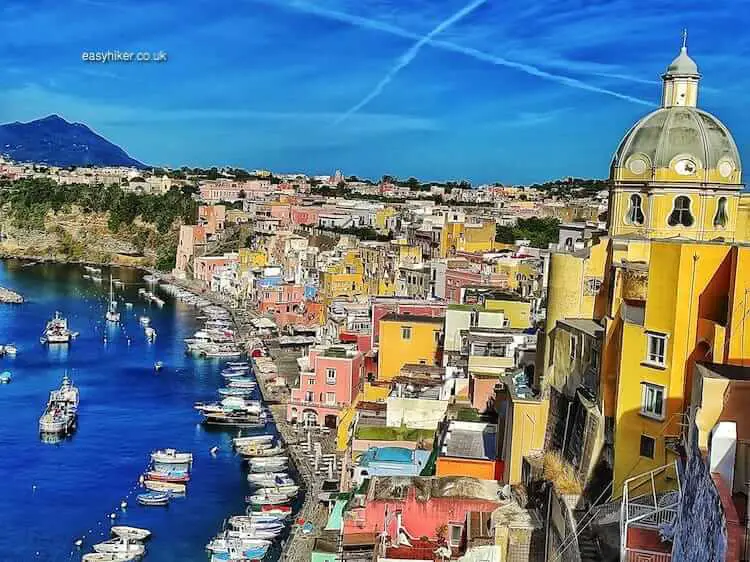
The closest analogy I can think of is Californian rock: Naples is like an album half of which has been recorded by Guns ‘N Roses and the other half by the Doors – full of energy, but everybody is constantly on tenterhooks. In Procida, the mood is more mellow and laid back, like the Beach Boys on a particularly carefree day.
There are, however, also some similarities with the mainland metropolis. For one, the same “Italian Rules” apply on Procida as in Naples: the country’s unwritten laws, the only ones that any native takes serious, are as rigorously enforced.
Italy’s strict laws regulate mainly two areas: food (don’t cut your noodles!) and appearance (colours must match!). Which is why, when choosing hiking wear, you should always ask yourself how it looks. In Italy, more than anywhere else on the planet, you are what you show.
When I most recently browsed through the adidas catalogue, black trainers for women and for men struck me as something that Italians would appreciate: they go equally well with light beige trousers and tanned bare legs, while the stripes – either white or a slightly different shade of black – produce a striking effect.
White trainers are the easy hiking option: the footwear least likely to attract attention, and that may suit some people fine. But remember: Italian rules apply, and no Italian has ever dressed to fly under the radar.
There is another – possibly surprising – similarity to the nearby metropolis: Procida is quite densely populated. Not as densely as Naples, of course: but wherever you go, while the natural landscape is part of the scenery, …
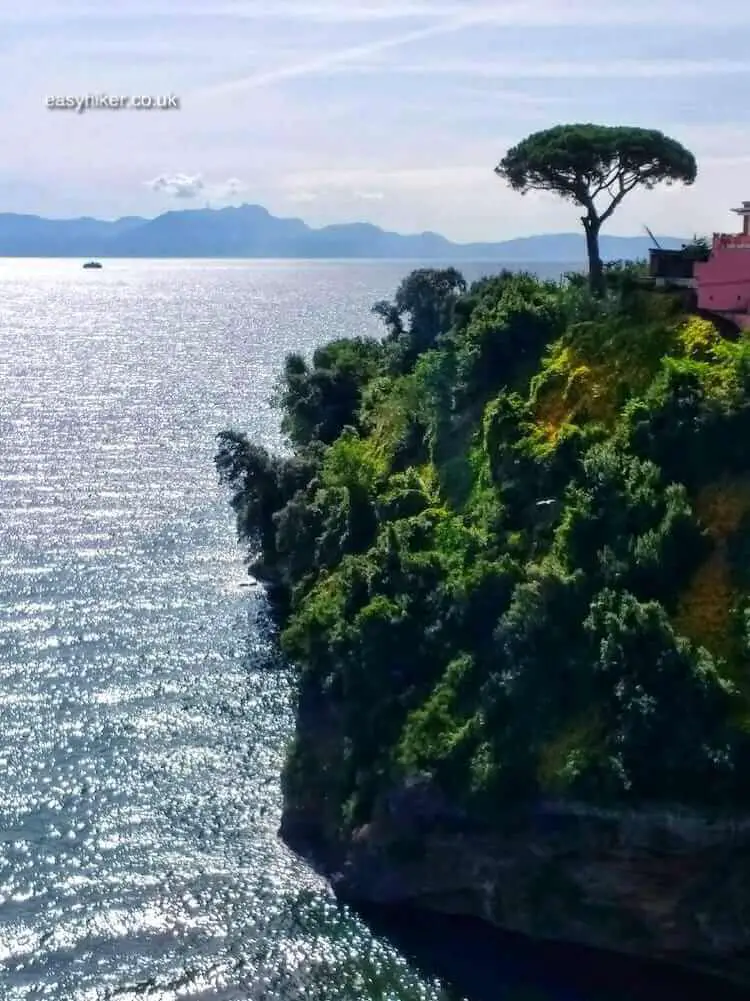
… you generally get your views of it through a lens of urban civilization.
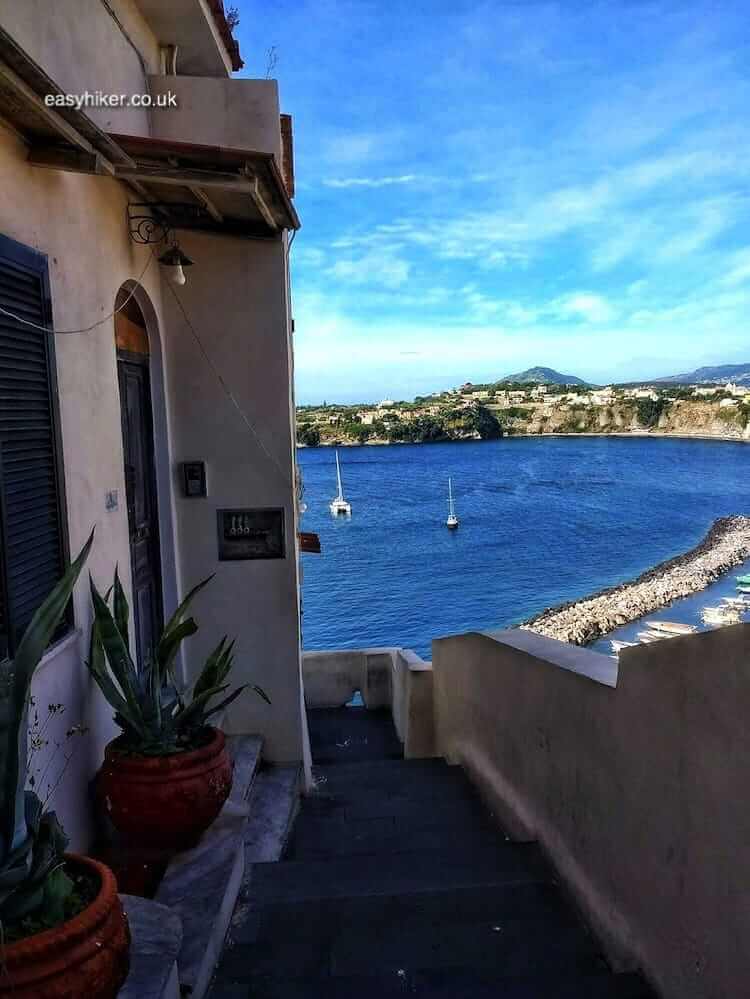
When walking around the island, you must expect asphalted trails. It took us surprisingly long to feel the bare earth under our feet: this was at the (freely accessible) Belvedere in the back of the Hotel Solcalante on the island’s west coast.

But when we tried to follow the enticing foot path that led into a shady thicket, …

… we soon found a fence almost as soon as we had entered it. That is the problem with densely populated areas.
To get to Procida, take the ferry from the Molo Beverello in the port of Naples (take the Metro to Municipio and exit at the port, turning right and then following the signs to the ferry harbour).
Do not buy your tickets days in advance (they are more expensive): just go and take the next boat, but be there an hour before your planned departure.
All ferries to Procida are fast passenger-only boats, but for the return, you have a choice between faster and slower, cheaper transfers. (The time difference is approx. 30 minutes.) You will arrive in Procida at Marina Grande, the island’s main port and largest settlement, …
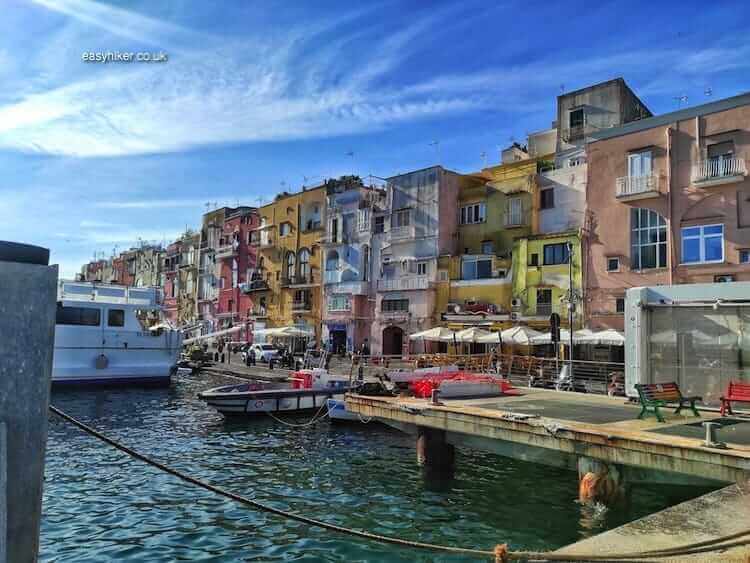
… and we recommend you spend some time there.
The village is sweet and picturesque, and many of the best things to see on the island can be found there. Make your way to the Santuario Mariano, …
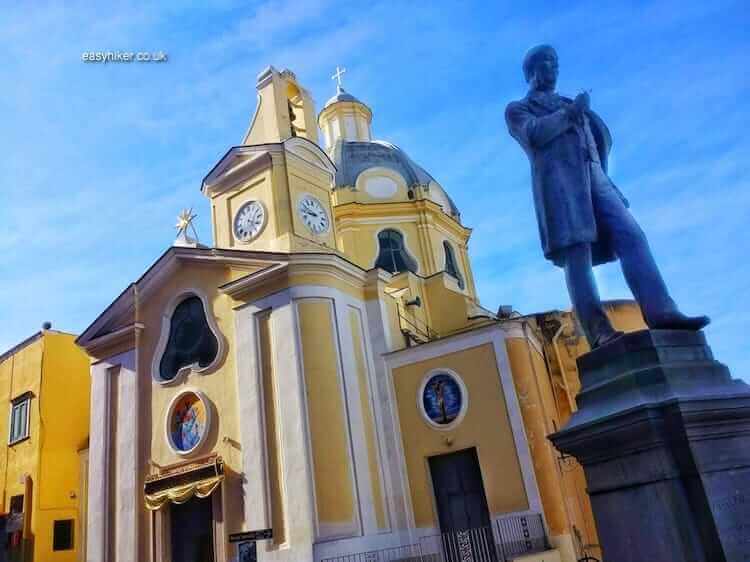
… and follow the route out of town down the coastal Via San Rocco.
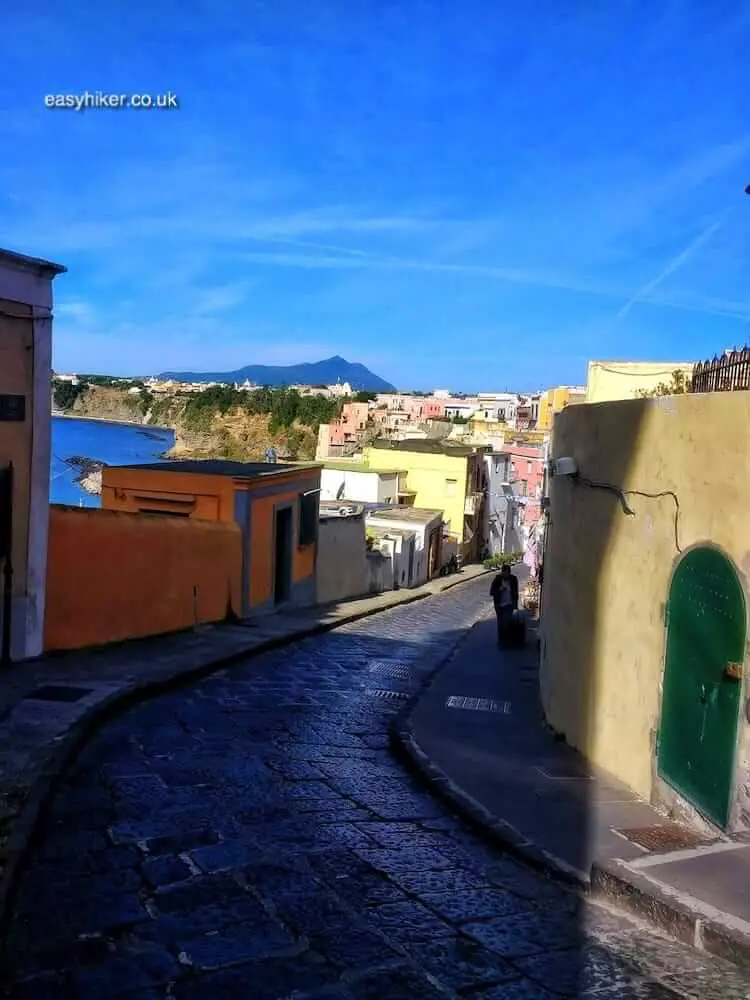
Keep straight and, once you have reached a lively village, look for a left turn into Via Pizzaco and, after 200 metres or so, turn left again into Via Raia. From here (way down the island’s east coast), you get some splendid panoramic views.

For our way back to the marina, we decided to criss-cross the island a little to take a look at its other side. For such an undertaking, it turned out, you will not only need a map but also a bit of a feel for the place.
Don’t assume that you can, at the bottom of a road that appears to end in a beach of some sort, make your way to the neighbouring road that seems to lead off the same beach. Sometimes, what looks like a cul-de-sac is a cul-de-sac: the Procida road system was not structured for adventurous ramblers.
Also note that the Google Street View map was last updated in 2018. You may be looking for a left turn that, in reality, no longer exists because someone has since extended his property by adding a car park or a fig tree. This can easily happen in Italy. Unpredictability is part of the country’s charm: it allows you to make unexpected discoveries, …
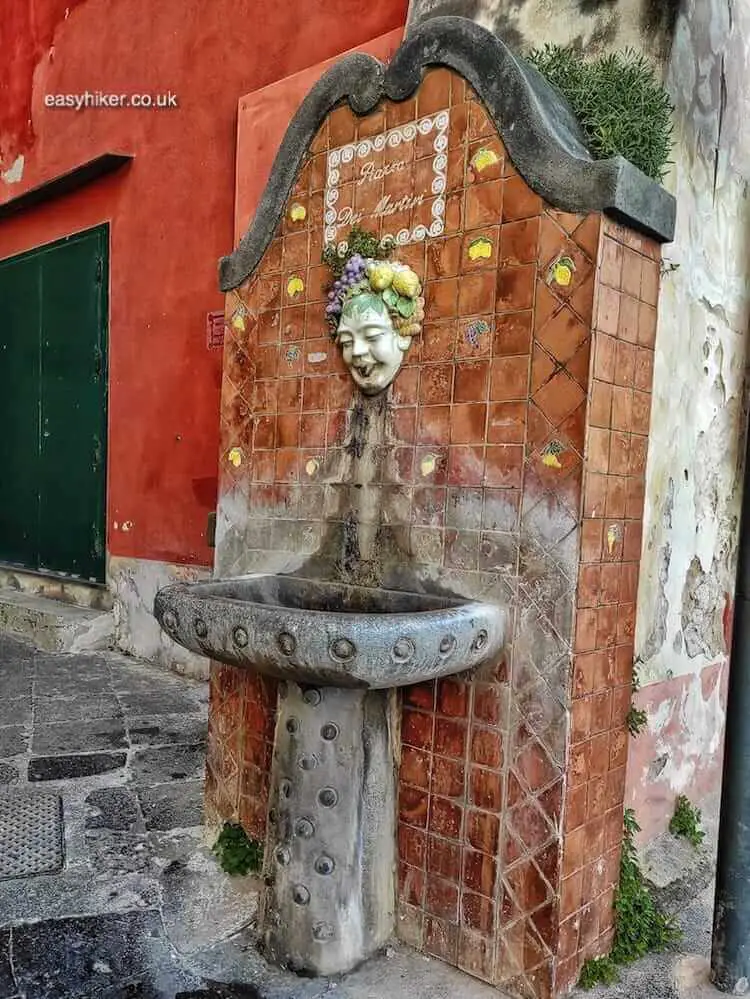
… but you will feel less charmed if you find that you have just walked half a mile down a dusty dead-end street and have to walk the same distance back to the last crossing.
But this is Italy: the key to enjoying it is to know how to take the rough with the smooth. This may be the most important unwritten rule of all.


